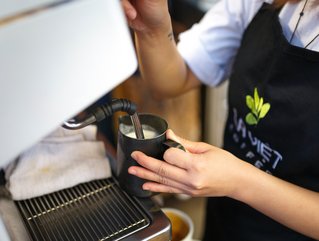Four ways remote monitoring (IoT) can transform coffee shops

The Internet of Things, otherwise known as remote monitoring, is a fourth-gen technology that is already impacting many industries – and it can do the same for catering, Quick Service Restaurants and cafés. It may not have the revolutionary potential of its more futuristic and less-developed counterparts, such as AI, but it has clear potential, today, to radically improve hospitality and catering business operations.
IoT, with the correct software to manage and action the vast amounts of data it creates, can streamline operations and increase productivity – allowing you to see what needs doing in real-time and importantly what is most pressing. From this, you can see accurate patterns which allows you to plan more accurately
What is remote monitoring?
Simply put, these are remote sensors that can be connected via the internet to a network that talks to you through a digital platform. These sensors can measure anything from the power draw of a coffee machine or the temperature of a fridge to the level of lighting or even noise in a room.
1. Plug the gaps during the staffing crisis
Whether due to the pandemic or ‘The Great Resignation’, much of the industrialised world is facing a staffing crisis – and hospitality, catering and service industries are one of the most impacted – hence why job vacancies in the hospitality sector have risen more than 700% in a year.
Although there is no technological cure for such an endemic problem, teams that learn to use their time more wisely will feel less stressed and that their work is more productive. IoT provides insight into what’s happening around you in real-time, which means you can work off what needs doing when, rather than a fixed schedule.
IoT sensors fitted on toilet doors make that possible by counting visitors. So, instead of cleaning and restocking toilets after a quiet morning when only a handful of shoppers have wandered in, staff can be more profitably employed selling coffee and cake. Conversely, additional staff will need to be deployed to cleaning duties during a busy afternoon. Ultimately, this means time is spent more wisely.
2. Assuring food safety
Safety should be a top concern for a business in catering or hospitality, however, that does not mean that it is wise to spend hours doing tasks unnecessarily. For example, manual temperature checks on fridges with thermometers can take up to an hour a day, which really stacks up across the week.
In contrast, IoT sensors connected to good software can tell you the fridge temperature continuously, and even warn you if it goes above a maximum threshold – saving you not only time but also adding another assurance that everything is how it should be, minimising food wastage and money. This assurance is additionally backed up by a digital ‘paperless’ trail.
Furthermore, and carrying on from the fridge example, IoT allows you to see patterns in temperature changes – which means you can accurately predict the future. For example, if temperatures consistently rise around lunchtime, this could point to inadequate training or inattentive staff who leave the fridge open in between uses.
3. Proactive maintenance
Cafés and coffee shops are full of fragile, expensive and vital equipment – as are most businesses involved in the production and sale of food and drink. Many of these are instrumental, and without them, the business can’t operate at all.
IoT sensors on equipment can enable you to implement a system of preventive maintenance, which can either react to a prediction you’ve spotted from the patterns of use or to an alteration in the equipment’s performance. This means reducing downtime and costly repairs to a minimum.
4. Creating comfortable conditions for customers
As we all know, improving a customer’s comfort can have a direct and quantitative impact on the time spent in a premises, how much they spend and ultimately the business’s bottom line. Sensors, connected to an IoT network, can monitor anything from open doors so you can stop a draft, to radiators and temperature levels so you can maintain a comfortable ambience.
However, data is nothing without action, and only with the right software can you access, view, and create meaningful action from the reams of data an IoT network will produce. Adaptive, flexible, and intuitive software is the key to unlocking the productive power of remote monitoring.






